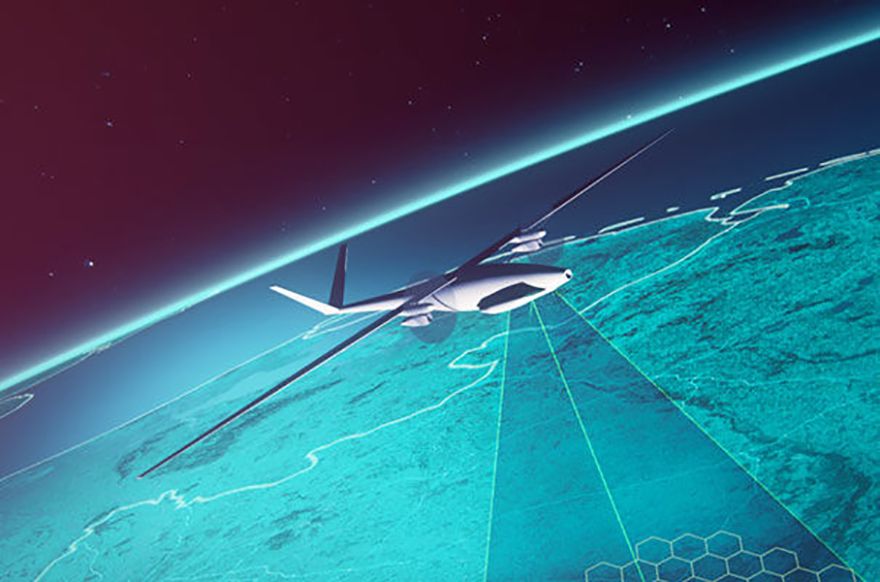 Courtesy of SPL LtdCambridge Consultants
Courtesy of SPL LtdCambridge Consultants, in collaboration with
Stratospheric Platforms Ltd (SPL), have unveiled a new antenna capable of delivering 5G connectivity to the ground from a fleet of unmanned aircraft flying at an altitude of 60,000ft.
The zero-emissions aircraft would be powered by liquid hydrogen fuel cells and capable of flying for up to nine days.
SPL is developing the high-altitude platform (HAP) and communication system that can operate in the stratosphere with the aim of bring affordable, fast connectivity to all parts of the world.
A single HAP could provide coverage over an area of up to 140km in diameter, equivalent to deploying hundreds of today’s terrestrial masts. A fleet of around 60 HAPs could blanket the whole of the UK with connectivity, providing geographic coverage with peak 5G speeds in excess of 100 Gbps in aggregate with a latency of just 1m/sec.
With radically cheaper costs, Cambridge Consultants says this new platform has the potential to connect the unconnected in the developing world, to fill gaps in coverage across the developed world, and to ensure rural areas are not left behind anywhere around the globe.
In addition, the hydrogen fuel cell power system creates a long-endurance, low environmental impact aircraft, with low noise, zero CO
2 and zero NOx emissions.
SPL completed its first successful test trial during September 2020 and roll-out of the first commercial service is anticipated to begin in Germany during 2024. Each aircraft’s antenna produces 480 individual, steerable beams, creating patterns that can be ‘painted’ onto the ground to cover specific areas such as roads, railway lines or shipping lanes.
The ability to produce hundreds of beams enables the antenna to reuse spectrum, ensuring fast and even coverage across the entire covered area. SPL says a unique, wholly digital beam forming capability gives massive flexibility in how services are deployed, allowing in-flight reconfiguration to deliver services beyond the reach of conventional fixed terrestrial networks.
This includes following mobile users, including trains and autonomous vehicles, and providing coverage exactly where required, for example ending at national borders.
Stratospheric Platforms CEO Richard Deakin said: “It was essential that we overcame significant technical challenges in the design of the antenna to enable us to deliver massive data rates in a unique environment where power was limited, where weight was critical and where cooling in the thin, stratospheric air was difficult.
“The development and testing of the antenna has met or exceeded the design criteria and working with such a talented team at Cambridge Consultants has been one of the highlights of the programme to date.”
Tim Fowler, chief sales officer at Cambridge Consultants, said: “Four years ago SPL approached Cambridge Consultants with an ambitious vision – to revolutionise the telecoms experience by beaming connectivity from the sky.
“Our role, to design and build this ‘mega cell tower in the stratosphere’, has seen us make breakthrough after breakthrough and we are excited to build on these innovations with SPL, on the path to commercial deployment.”